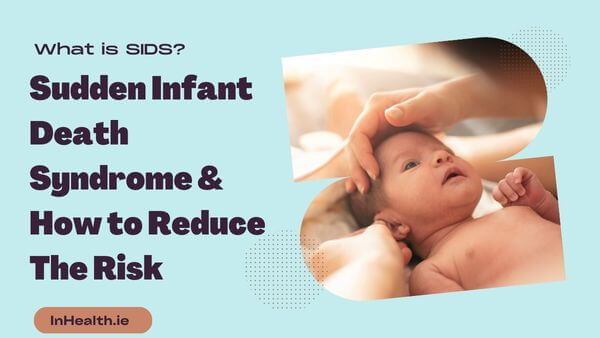What is SIDS and How Can the Risk Be Reduced?
As a parent, you're likely to have heard of SIDS, or Sudden Infant Death Syndrome. It is classified as the unexpected death of an apparently healthy infant younger than one year old, with no apparent cause.
What Causes SIDS?
An exact cause has yet to be found, but it is believed to be related to a combination of underlying vulnerabilities and environmental stressors, such as the following:
Unsafe sleeping conditions:
Infants who are placed to sleep on their stomach or side, on a soft surface, or with soft bedding, may be at higher risk of SIDS. Sleeping on their back on a firm and flat surface is the safest sleeping position for infants. The Clevamama ClevaSleep Plus Elevated Support promotes the "Back to Sleep" resting position as recommended.
Overheating:
Infants who are too warm while sleeping may be at increased risk of SIDS.
Respiratory infections:
Infants who have a cold or other respiratory infection may be at increased risk of SIDS.
Exposure to cigarette smoke:
Infants who are exposed to cigarette smoke before or after birth are at increased risk of SIDS.
Premature birth or low birth weight:
Infants who are born prematurely or with a low birth weight may be at higher risk of SIDS.
SIDS is rare, and many infants who have one or more of these risk factors do not die from SIDS. However, by reducing these risk factors through safe sleep practices, parents and caregivers can significantly reduce the risk of SIDS and provide a safe sleep environment for babies.
To help reduce the risk of SIDS, the following steps can be taken:
Always place your baby to sleep on their back:
It is recommended that infants be placed on their backs to sleep for every sleep, including naps, until they are one year old. This is the most effective way to reduce the risk of SIDS.
Use a firm, flat sleep surface:
A firm and flat surface, such as a safety-approved crib or bassinet, is recommended for infant sleep. Soft surfaces, such as couches, armchairs, or adult beds, can increase the risk of SIDS.
Remove soft objects and loose bedding from the sleep area:
Keep soft objects, such as pillows, bumper pads, and stuffed animals, out of the baby's sleep area, as they can increase the risk of suffocation or overheating. Dress your baby in a sleep sack such as the Grobag Ollie Owl Print Newborn Snuggle Sleep Bag 1.0 Tog or other appropriate clothing for warmth.
Share your room but not your bed:
Room-sharing, where the baby sleeps in the same room as the parents, but not in the same bed, is recommended for at least the first six months of life and ideally for the first year. Try a bedside crib instead, such as the Chicco Next2Me Air Side Sleeping Crib Titanium.
Avoid exposure to smoking and secondhand smoke:
Smoking during pregnancy and exposing your baby to secondhand smoke after birth can increase the risk of SIDS.
Breastfeed your baby:
Breastfeeding is associated with a reduced risk of SIDS, and it has other health benefits for both mother and baby.
Provide a safe sleep environment:
Keep the room at a comfortable temperature and do not overbundle your baby. Make sure your baby's head and face remain uncovered during sleep.
Advice & articles
-
Lulla Doll : Your Baby’s Sleep Companion, Backed by Science!
19th Nov 2024Introducing the NEW Lulla Doll!Lulla Doll is a multi-award winning baby sleep aid that's suitable f
-
How to Cope With Back Pain During Pregnancy
9th Nov 2024Suffering from back pain during pregnancy? It's one of the most common complaints, especially toward
-
Introducing Zita West - The Must Have For Conception, Fertility and Postpartum!
2nd Nov 2024Zita West has landed at InHealth.ie!If you’re a woman couple in Ireland looking for guidance you ca
- Read more articles




